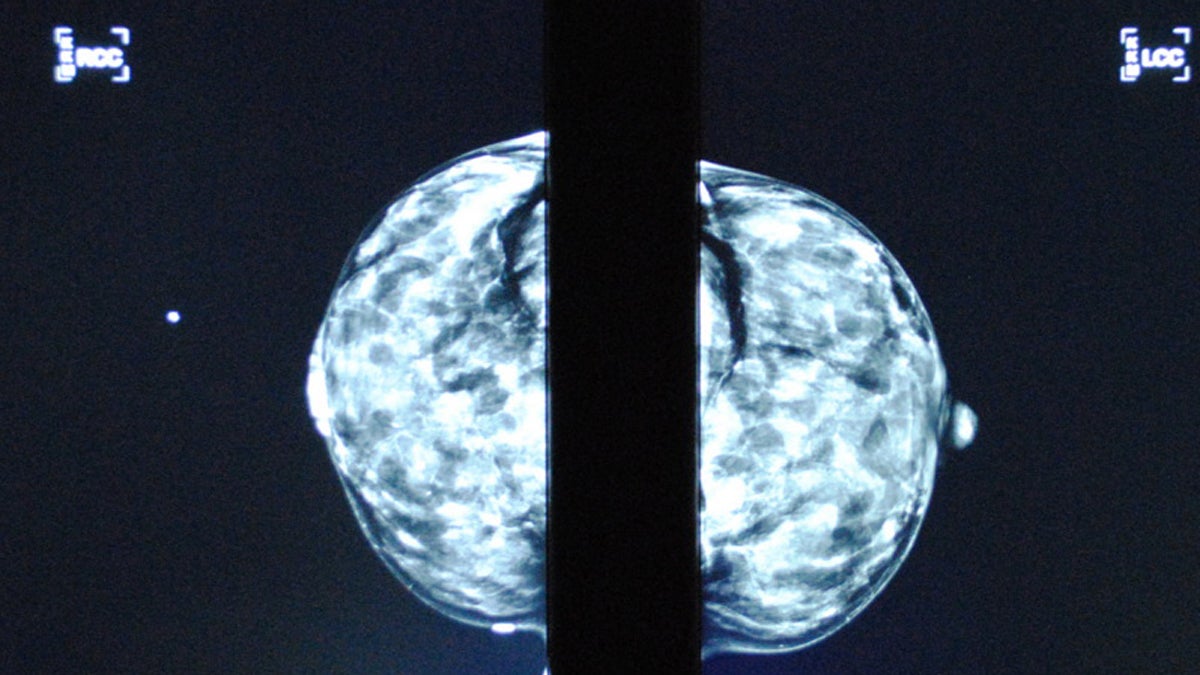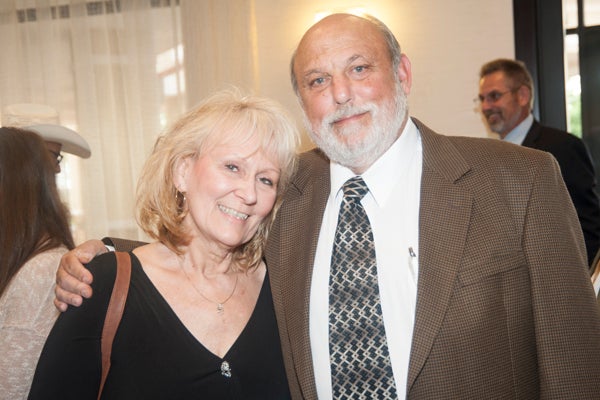Breast density laws, for better or worse
Listen
To notify, or not to notify?
Cindy Olmstead was about to have major surgery. She had found a cancerous lump in her breast and scheduled a mastectomy right away. Even though she lives in Ohio, she was seeing a doctor at a hospital in Fort Wayne, Indiana.
“When I was laying on the gurney waiting to have my breast removed our neighbor from Ohio came to wish me well, and he brought us all our mail,” Olmstead said.
At the time, Olmstead was 60 years old. She had been through a long, terrible journey of tests, biopsies and false alarms, but eventually, she could feel a lump herself. A surgeon confirmed the diagnosis with a biopsy, and Olmstead was ready for surgery.
“And I opened the mail, because there was a letter from Breast Diagnostic Center there, and the letter said, ‘We are pleased to inform you that we have found no evidence of cancer in your breast,'” Olmstead recalled. “This is when I’m sitting 30 feet from the operating room, waiting to get my breast taken off.”
Hidden in plain sight
On Tuesday the American Cancer Society announced new guidelines for breast cancer screening, and the gist is: get mammograms at an older age and less frequently. But in recent years, it’s become clear that even if you go for a routine mammogram, that dense breast tissue can camouflage cancerous spots on the x-ray.
“The doctor’s biopsy came back positive for cancer. The mammogram—the same week—came back negative for cancer,” Olmstead explained.
She was shocked. How could this happen?
Although she didn’t know it at the time, Olmstead had something called dense breast tissue. It’s pretty common. About half of women have dense breasts at some point in their lives. But back when Olmstead was going through all this, she didn’t hear anyone talk about it—even though she’s a journalist who has written in-depth reports on breast cancer.
“Had I known that I had heterogeneously dense breasts at the time all this happened, I maybe would have changed my course of treatment,” Olmstead said. “I may have gone for a second opinion sooner.”
Dr. Laurie Margolies is the director of breast imaging at the Dubin Breast Center at Mount Sinai Hospital in New York City.
“So most cancer spots show up as white. So what does dense breast tissue look like? White! So we’re looking for white on white,” Margolies explained while pointing at an x-ray of dense breasts.
If there’s a cancer it can easily hide behind some of the dense breast tissue.
Years ago, Margolies said, nobody was really talking about breast density.
“That all changed in the state of Connecticut, when Nancy Capello was found to have breast cancer not long after negative, normal mammogram. And she started investigating why this was so,” Margolies explained. “Her doctor said, ‘Well, you have dense breasts! You could’ve found it earlier perhaps with an ultrasound’ and she said, ‘But I didn’t know!'”
Nancy Capello set out on a mission to change that. She started advocating for a law that would require doctors to tell patients if they have dense breast tissue and founded a nonprofit called Are You Dense?
Today, some version of this law exists in 24 states, and bills are pending in nine more. Plus, a federal bill was just reintroduced earlier this year.
For better or worse
Despite this growing movement, experts are divided about whether mandatory notification laws are saving lives or prompting unnecessary biopsies.
“Having the information about your breast density is not the problem. The problem then becomes what to do about it,” Margolies said. “Do you biopsy everything that you see or only the things that are super suspicious? And I think that’s part of a national learning curve.”
Some see notification as a way to catch more cancers. But others say it might send the wrong message. Among them is Dr. Jennifer Haas, a physician at Brigham and Women’s Hospital and professor of medicine at the Harvard Medical School. She says that legislation is well-intentioned, but misleading.
“The laws create the unsubstantiated anticipation that additional testing is better for women,” Haas wrote in an article published last month in The Journal of The American Medical Association.
There’s little evidence to date that telling women about breast density is saving more lives, Haas said. “It’s really diverting attention from other issues. So I think it would be really ideal if we could do a better job of educating women about their risk overall, of which density is one medium size risk factor.”

Cindy Olmstead with her husband Bill, celebrating five years cancer-free. (Courtesty Cindy Olmstead)
This summer Cindy Olmstead celebrated five years of being cancer free. She wishes her doctors had told her about breast density, which she only confirmed by getting her medical records.
“Number one, they never told me, so that I could be aware of it, and number two, I don’t think they told each other. Like the one hand didn’t know what the other hand was doing,” Olmstead said.
Today, her home state of Ohio does have a mandatory breast density notification law. The federal bill is lingering in the senate health committee.
WHYY is your source for fact-based, in-depth journalism and information. As a nonprofit organization, we rely on financial support from readers like you. Please give today.



